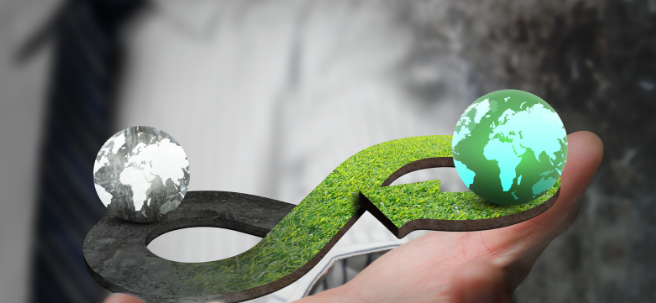
23 de July de 2020
Innovación
23/07/2020 - The Council of Ministers recently approved the Spanish Circular Economy Strategy (EEEC) ― “Spain Circular 2030” ―, which proposes a new scenario to overcome the linear economy and promote a new production and consumption model that minimizes waste generation and maximizes the use of waste whose creation could not be avoided.
- "Circular Spain 2030" promotes a production and consumption model that ensures the value of products, materials, and resources remain in the economy for as long as possible.
- The Spanish Circular Economy Strategy (EEEC) is aligned with the European Union's circular economy objectives, as well as with the European Green Deal and the 2030 Agenda for Sustainable Development .
 |
"Circular Spain 2030" sets goals such as reducing national material consumption by 30%, improving water efficiency by 10%, and reducing waste generation by 15% compared to 2010. This will make it possible to reduce greenhouse gas emissions from the waste sector to below 10 million tons by 2030.
Rural development
The strategy identifies six priority sectors of activity in which to incorporate this challenge for a Circular Spain: construction, agri-food, fishing and forestry, industrial, consumer goods, tourism, and textiles and clothing.
To advance the circular economy, the strategy lists key policies such as economic, tax, employment, R&D, consumer, industrial, water, agricultural, and rural development.
Goals
Spain Circular 2020 sets the following objectives for 2030 :
• Reduce national consumption of materials by 30% relative to GDP, using 2010 as the reference year.
• Reduce waste production by 15% compared to what was generated in 2010.
• Reduce food waste throughout the food chain: 50% reduction per capita in household and retail consumption and 20% in production and supply chains by 2020, thus contributing to the Sustainable Development Goals (SDGs).
• Increase reuse to 10% of the municipal waste generated.
• Improve water use efficiency by 10% .
• Achieve greenhouse gas emissions below 10 million tons of CO2 equivalent.
Materialization
The Circular Economy Strategy's policies and instruments and corresponding action plans will focus on eight main lines of action . Five of them are related to: production, consumption, waste management, secondary raw materials, and water reuse. The remaining three are cross-cutting: awareness and participation; research, innovation, and competitiveness; and employment and training.
The Spanish Circular Economy Strategy (EEEC) is aligned with the European Union's circular economy objectives, which strengthens rural development as a whole.









